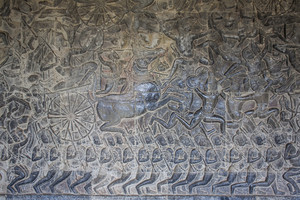Coffee is a beloved beverage that has been enjoyed for centuries. While espresso and lattes are popular choices, there’s so much more to explore when it comes to coffee blends. In this blog post, we’ll take you on a journey to discover hidden gems in coffee blending, uncover the origins of your favorite brews, and learn about the science behind your daily cups. Let’s get started!
Types of Coffee Beans: Exploring the Different Flavors and Aromas
There are countless varieties of coffee beans available, each with its unique flavor profile. Some of the most common types include Arabica, Robusta, and Liberica. Arabica beans tend to have a mild taste with notes of fruit and berries, while Robusta beans have a stronger, earthier flavor. Liberica beans are grown mainly in the Philippines and have a rich, syrupy sweetness. Beyond these main varieties, there are many other specialty coffees like Blue Mountain from Jamaica or Geisha from Panama. Each type of bean offers something different, so it’s worth exploring them all to find your perfect cup.
Where Do Coffee Beans Come From? Uncovering the Origins of Your Favorite Brews
The origin of a coffee bean can greatly impact its flavor profile. For example, beans from Ethiopia are known for their floral and citrusy notes, while those from Kenya have a bright acidity and a wine-like quality. Brazilian beans tend to be full-bodied with nutty overtones, while Colombian beans offer a smooth and balanced flavor. No matter where they come from, coffee beans go through a complex process before they end up in your cup. From harvesting to roasting, every step plays a role in creating the final product.
Discovering Hidden Gems in Coffee Blending: The Art of Creating Perfect Combinations
Blending different types of coffee beans is an art form that allows coffee experts to create unique and memorable flavors. By combining beans with varying characteristics, such as body, acidity, and sweetness, skilled baristas can craft brews that are both delicious and intriguing. One popular method is to use a “secret ingredient” bean that adds complexity and depth to the blend. Another approach is to focus on balance, using beans with complementary qualities to create a harmonious flavor profile. Whatever the technique, blending coffee beans is a fascinating aspect of the industry that continues to evolve and surprise us.
The Science behind Coffee: Understanding the Chemistry Behind Your Daily Cups
Coffee contains several compounds that give it its distinctive flavor and aroma. These include caffeine, which is responsible for the stimulating effects of coffee, as well as various acids like chlorogenic acid and quinic acid. Other chemicals present in coffee include sugars, proteins, and volatile organic compounds (VOCs) that contribute to its fragrance. When hot water is added to ground coffee, a series of reactions occur that release these compounds into the liquid, resulting in the rich and satisfying cup we know and love.
Coffee Around the World: Embark on a Journey to Learn about Different Cultures and Traditions
Coffee is not just a drink; it’s also a cultural icon that varies widely across different regions of the world. In some countries, coffee is served with milk and sugar, while in others, it’s sipped black. There are also traditional ways of preparing and serving coffee, such as Turkish coffee or Italian espresso. Additionally, coffee has played an important role in history, shaping economies and influencing politics. Whether you prefer your coffee light and fruity or dark and bold, there’s always something new to discover in this beloved beverage.
